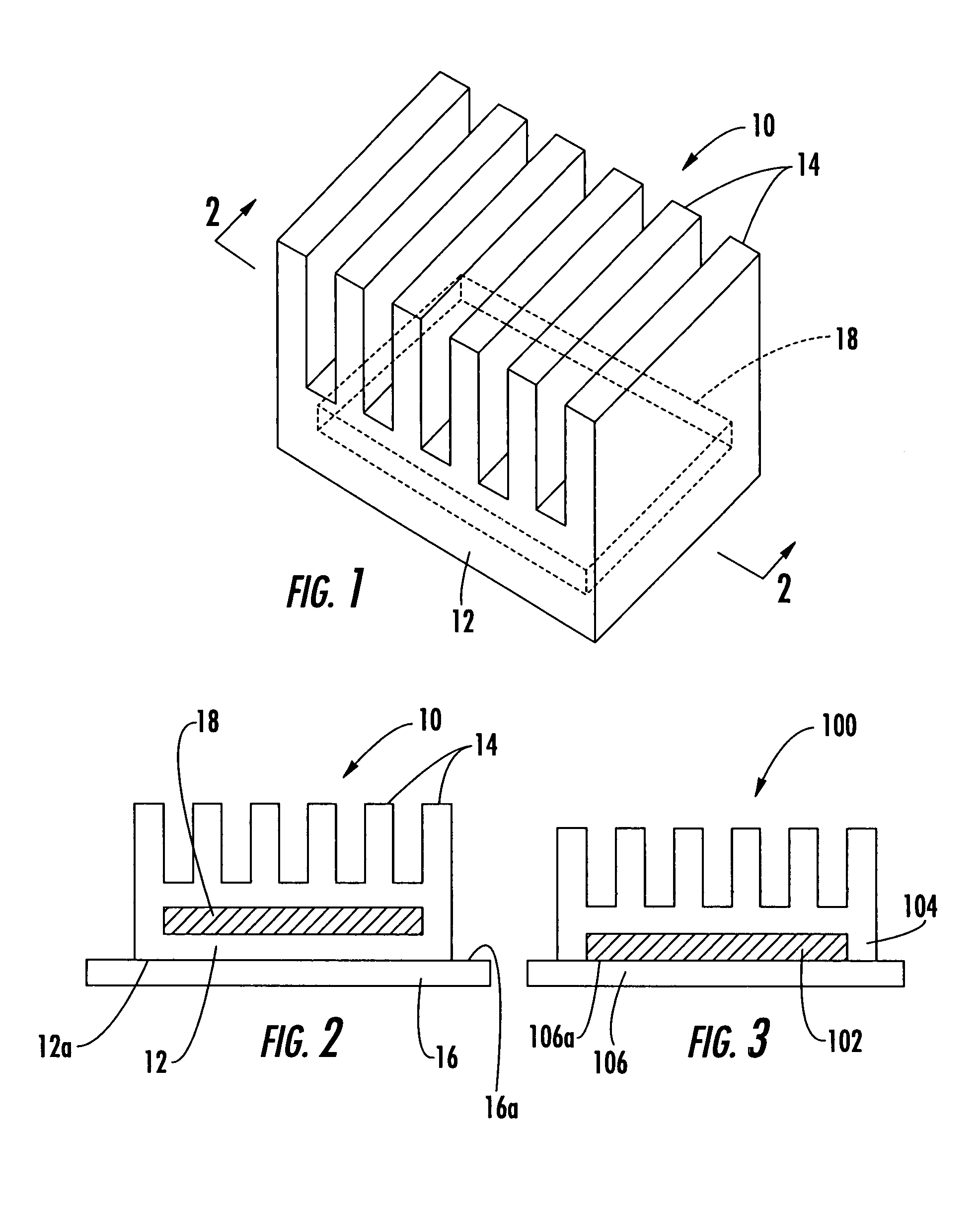Heat sink assembly with overmolded carbon matrix
- Summary
- Abstract
- Description
- Claims
- Application Information
AI Technical Summary
Benefits of technology
Problems solved by technology
Method used
Image
Examples
Embodiment Construction
[0023]Referring first to FIGS. 1-3, the net-shape molded heat sink 10 of the present invention is shown. In FIG. 1, a perspective view of the molded heat sink 10 of the present invention is shown while FIG. 2 illustrates a cross-sectional view through the line 2-2 of FIG. 1. The molded heat sink 10 includes a main body section 12 with a number of upwardly extending heat dissipating members 14. The molded heat sink 10 is net-shape molded, such as by injection molding, into a unitary structure from thermally conductive material, such as a thermally conductive polymer composition. The thermally conductive polymer composition includes a base polymer of, for example, a liquid crystal polymer that is loaded with a conductive filler material, such as copper flakes or carbon fiber. Other base materials and conductive fillers may be used and still be within the scope of the present invention. For example, other fillers that may be employed include copper, aluminum, carbon, magnesium and boro...
PUM
| Property | Measurement | Unit |
|---|---|---|
| Electrical conductor | aaaaa | aaaaa |
| Configuration | aaaaa | aaaaa |
Abstract
Description
Claims
Application Information
 Login to View More
Login to View More - R&D
- Intellectual Property
- Life Sciences
- Materials
- Tech Scout
- Unparalleled Data Quality
- Higher Quality Content
- 60% Fewer Hallucinations
Browse by: Latest US Patents, China's latest patents, Technical Efficacy Thesaurus, Application Domain, Technology Topic, Popular Technical Reports.
© 2025 PatSnap. All rights reserved.Legal|Privacy policy|Modern Slavery Act Transparency Statement|Sitemap|About US| Contact US: help@patsnap.com


